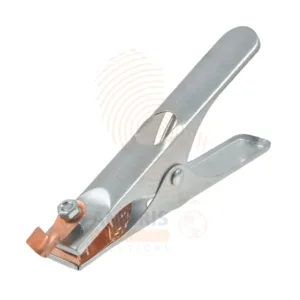Hose for Air Compressor 10M (6pcs)
Whatsapp Order
A hose for air compressor is a flexible and durable conduit designed to connect the air compressor to pneumatic tools, equipment, or other devices requiring compressed air. Typically made of materials such as rubber, PVC, or hybrid blends, these hoses are capable of withstanding high pressure and provide a pathway for the compressed air to flow from the compressor to the intended application. The hose facilitates the efficient and controlled transfer of compressed air, enabling various pneumatic tools and devices to operate effectively in a wide range of industrial, automotive, and household applications.
1. Material: 100% PVC
4. Working pressure: 300 PSI
2. Connection: 1/4″ NPT
3. Reinforced synthetic fiber
5. Operation temperature: -18 ℃ to 82
KSh 15,670.00 KSh 16,170.00
Hose for Air Compressor Uses
- Powering Pneumatic Tools:
- Hoses are crucial for connecting air compressors to pneumatic tools such as impact wrenches, nail guns, air drills, grinders, and sanders. The compressed air is used to power these tools, making them versatile and efficient.
- Spray Painting:
- Air compressors, along with hoses, are commonly used for spray painting applications. The compressed air helps atomize paint particles, providing a smooth and even coating on surfaces.
- Inflating Tires and Sports Equipment:
- Hoses are used to connect air compressors to inflation devices, making it easy to inflate tires, sports balls, inflatable toys, and other items.
- Cleaning and Dusting:
- Air compressors, when connected to hoses with appropriate nozzles, can be used for blowing away dust and debris from surfaces and equipment. This is common in workshops and industrial settings.
- Sandblasting:
- For tasks such as cleaning and surface preparation, sandblasting equipment is connected to air compressors via hoses. The high-pressure air is used to propel abrasive materials for cleaning or etching surfaces.
- Pneumatic Systems in Manufacturing:
- Industries use air compressors and hoses to power pneumatic systems for automation, control systems, and various manufacturing processes.
- HVAC Systems:
- Air compressors, along with hoses, are employed in the maintenance and installation of heating, ventilation, and air conditioning (HVAC) systems.
- Medical Equipment:
- Certain medical devices, like dental chairs or surgical tools, may be powered by compressed air delivered through hoses.
- Construction and Carpentry:
- Pneumatic nail guns, staplers, and other tools used in construction and carpentry are connected to air compressors via hoses.
- Pressure Testing:
- Hoses are utilized in pressure testing applications where a controlled and pressurized air supply is needed to test the integrity of pipes, containers, or other sealed systems.
Size
10M
Safety Measures and Precautions
- Inspect the Hose Regularly:
- Before each use, inspect the hose for any signs of wear, damage, or leaks. Replace damaged hoses promptly to prevent accidents.
- Use the Right Hose for the Job:
- Ensure that the hose is suitable for the specific application, taking into account factors such as pressure rating, temperature range, and compatibility with the type of air being compressed.
- Check Fittings and Connections:
- Inspect fittings and connections for tightness and secure attachment. Loose fittings can lead to leaks or sudden hose disconnection.
- Use Adequate Personal Protective Equipment (PPE):
- Depending on the application, wear appropriate PPE such as safety glasses, ear protection, and gloves to protect against potential hazards.
- Follow Manufacturer’s Guidelines:
- Adhere to the manufacturer’s recommendations and guidelines for the air compressor and hose. This includes information on pressure ratings, usage limitations, and maintenance procedures.
- Secure Hose Positioning:
- Securely anchor or support the hose to prevent it from whipping or kinking during use. This is particularly important when working with high-pressure air.
- Bleed Air Pressure Before Disconnecting:
- Before disconnecting the hose or making any adjustments, bleed off the air pressure in the system to avoid sudden release of compressed air.
- Maintain a Safe Distance:
- Keep a safe distance from the point of use, especially when using pneumatic tools. This precaution helps prevent injuries in case of unexpected hose disconnection or tool malfunction.
- Avoid Over-Pressurization:
- Do not exceed the recommended pressure limits of the hose. Over-pressurization can lead to hose failure, posing a significant safety risk.
- Educate Users:
- Ensure that all individuals using the air compressor and hose are properly trained on its safe operation. Emphasize the importance of following safety guidelines.
- Store Hoses Properly:
- When not in use, store hoses in a clean and dry environment away from direct sunlight and potential sources of damage.
- Emergency Response Plan:
- Develop and communicate an emergency response plan in case of accidents, including procedures for shutting off the air compressor and administering first aid.






Ruth Cheruto –
Reliable and extremely well-made.
Ruth Cheruto –